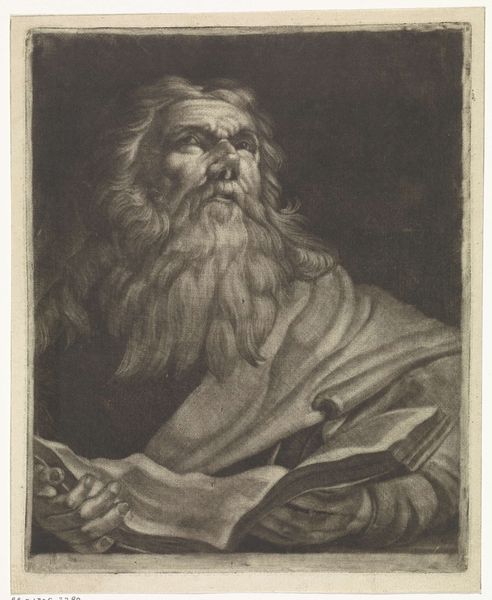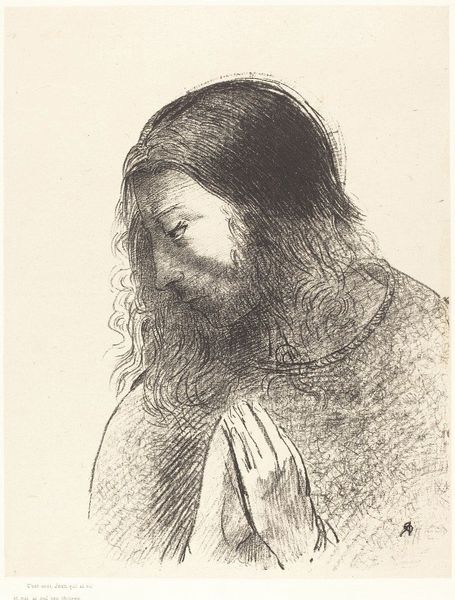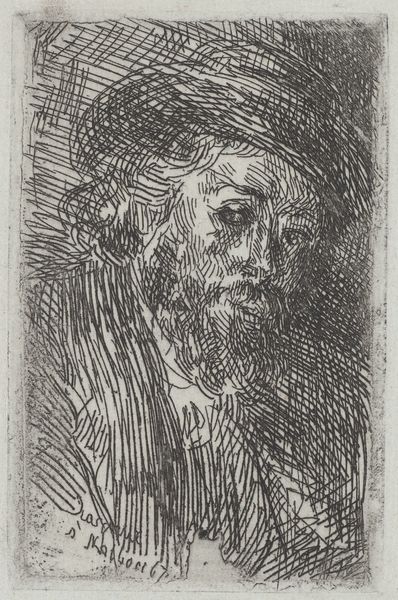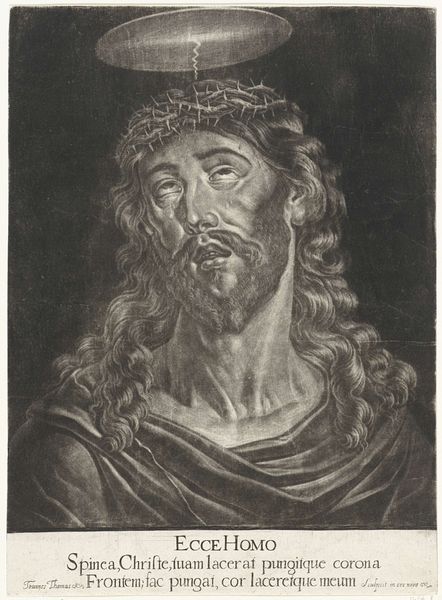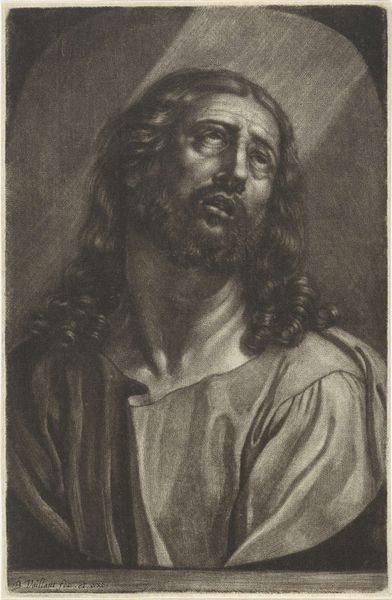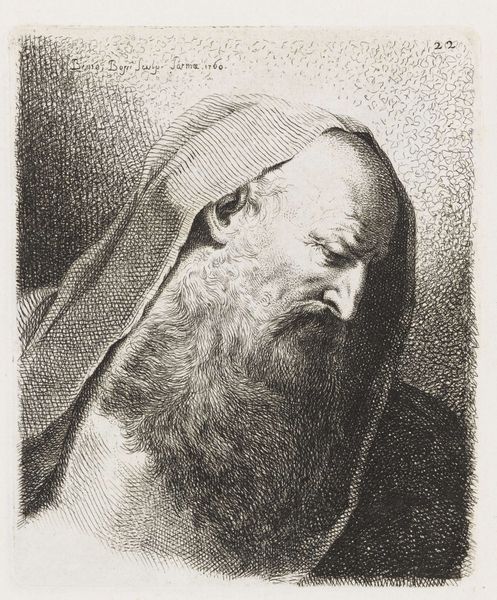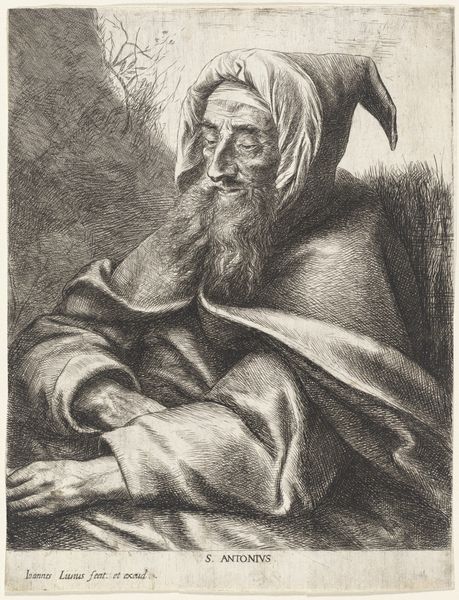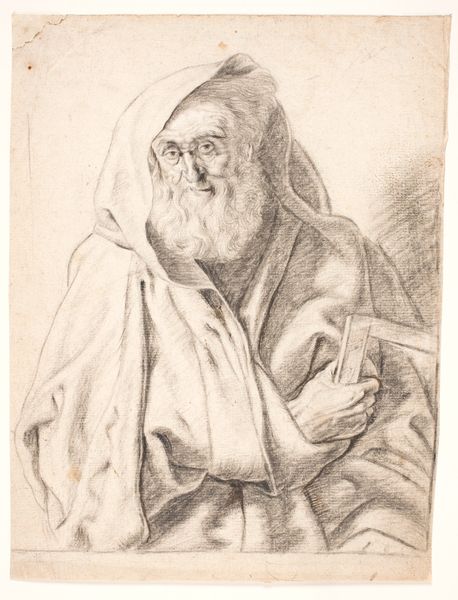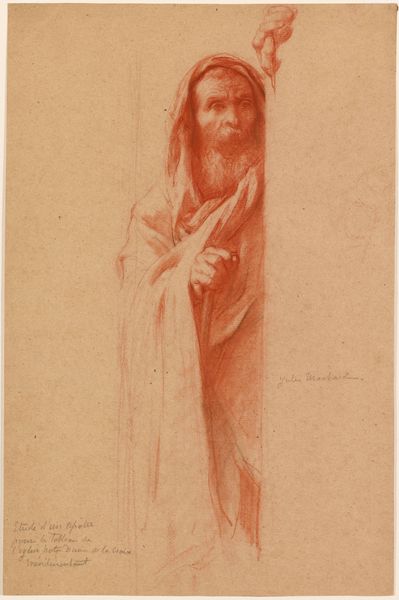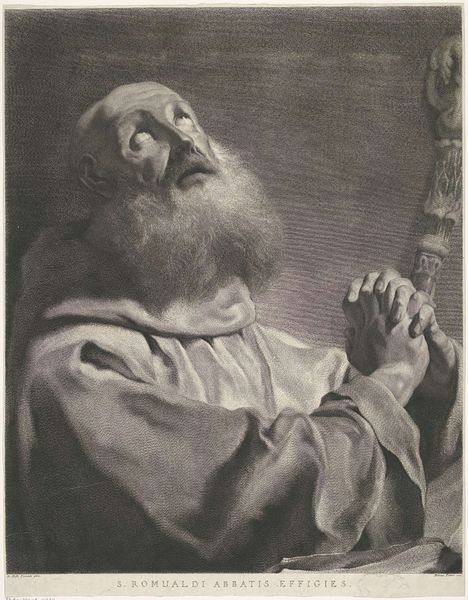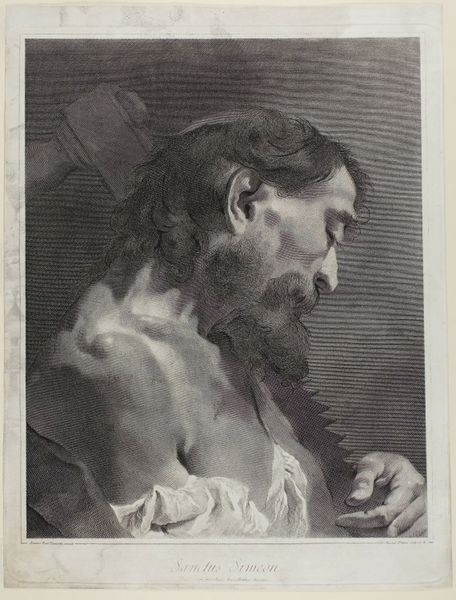
Dimensions: sheet (trimmed within platemark): 18 × 14 cm (7 1/16 × 5 1/2 in.)
Copyright: National Gallery of Art: CC0 1.0
Curator: This print, entitled “Saint Mark,” was created by Jodocus Bickart sometime between 1660 and 1684. The piece is an engraving, a technique favored during the Baroque era, and shows the saint alongside his symbolic lion. What catches your eye when you first see this image? Editor: Honestly, it's the melancholic expression. He seems burdened, not exactly the triumphant figure I’d expect. The dramatic shadows only amplify the somber mood. It looks like he's contemplating some weighty truth, or perhaps mourning something lost. Curator: That interpretation resonates with me. It makes me think about how depictions of saints are so often sugarcoated. This portrayal feels… more human, vulnerable even. I mean, look at the rough textures, the slightly unfocused gaze. The artist really let the engraving lines speak to the fragility of existence. Editor: Right, it's less about the idealized sainthood and more about exploring human experience through the lens of religious iconography. But let's also think about the social context of Baroque art, especially the Counter-Reformation. Religious imagery often served as propaganda, a way to reaffirm Catholic doctrine in response to the Protestant Reformation. Curator: So you’re suggesting this vulnerability, this less-than-perfect depiction, could also be a tool, a more relatable image for the faithful. A way to show that even saints have doubts or struggles? Editor: Precisely! Highlighting the human aspects can make religious figures seem more accessible and, paradoxically, more powerful. It creates a sense of shared experience, drawing people closer to the Church's message. What about that lion? Is that supposed to also convey a sense of frailty? Curator: No, the lion symbolizes courage, royalty, pride. Bickart positioned it subtly behind Mark; the saint appears to protect the majestic animal in a shared dance. That being said, it almost appears fearful! Overall, it feels as though this is less a celebratory symbol of the Church and more of a nuanced exploration of faith. Editor: Indeed. It pushes past simplistic binaries and invites a more complex understanding of history, art, and faith. Curator: Absolutely. This engraving whispers to the power of nuanced interpretation and challenges to move beyond traditional artistic boundaries.
Comments
No comments
Be the first to comment and join the conversation on the ultimate creative platform.
